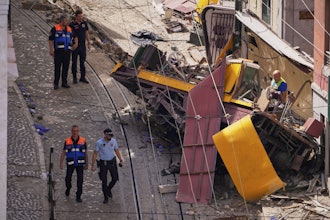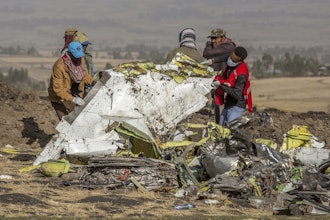
PWC and the Manufacturing Institute recently reported that 86 percent of manufacturing executives named safety as the most important factor for creating a positive workplace experience. The Journal of Occupational and Environmental Medicine also found that “Building cultures of health and safety provides a competitive advantage,” and companies with outstanding health and safety programs outperform the market.
And yet, safety is too often thought of as a matter of compliance than a strategic advantage. In the pinch of competing priorities, stakeholder demands, and external events, leaders can fail to understand safety as a strategy—one that is incredibly important for business outcomes.
There’s ample evidence that making safety strategic raises performance across a wide range of metrics, from quality to job satisfaction to turnover. That’s because making safety a priority changes the mindset of employees.
Why Safety is Strategic
From 1987 to 2000, Alcoa CEO Paul O’Neill led the company through a historic turnaround by focusing on safety. “If we bring our injury rates down, it won’t be because of cheerleading or the nonsense you sometimes hear from other CEOs,” he said. “It will be because the individuals at this company have agreed to become part of something important: They’ve devoted themselves to creating a habit of excellence. Safety will be an indicator that we’re making progress in changing our habits across the entire institution.”[i] During O’Neill’s 13-year leadership, Alcoa’s revenue jumped 500 percent, while its safety record became a world standard.
Safety affects more than revenue – greater safety has an obvious effect on costs. The latest Liberty Mutual Workplace Safety Index estimates that U.S. industries spent $58.7 billion on direct costs from worker injuries.[ii] The National Safety Council estimates that each $1 invested in injury prevention returns $2 or more in savings affecting compensation, productivity, and other expenses.[iii]
For a safety strategy to be ongoing and effective, it must be reinforced and encouraged in continuous way, every day. It should also shift the emphasis from safety violations and fear of retribution – which are reactive – and refocus it on positive, proactive processes that incite behavioral change.
McKinsey and Company’s recommendation for increasing safety for frontline workers is to make it a part of the company’s culture. To effectively do this, recommendations include:
- Rewarding safe behaviors (provide positive reinforcement).
- Clarifying that safety is the priority (be explicit).
- Role modeling behaviors from the top (start meeting by acknowledging how the company has performed against its safety goals).
- Communicating progress and results in high traffic areas (visible ways).
McKinsey suggests three best practices for sustaining safety initiatives:
- Refocus on the positive by designing a safety program that lets employees catch one another engaging in safer practices, and then reward that behavior.
- Put emphasis on safe processes and behaviors and minimize attention to safety metrics (such as days without an incident), which might actually impede reporting.
- Offer consistent, thoughtful safety education based on input from employees about known issues and everyday activity.
Strategic recognition is the solution that teaches and sustains this culture of safety, each and every day. Recognition fosters appreciation, trust, and goodwill among employees. Stronger social bonds among teammates mean employees are more likely to do things the right way because they care and have a sense of investment in the work they do. In fact, there is an 82 percent lower recordable injury rate for plants with strong cultures of social recognition.
When safety is a priority, it’s as important as other critical values of the organization, such as quality, customer focus, innovation, integrity, and many others. What matters is that safety has the same status as other values. Everyone becomes alert to positive safety behavior, and everyone can reward it publicly through the system.
For deskless workers, a recognition system can work through tablets or smartphones, which make peer-to-peer awards immediate and easy (the most effective recognition happens quickly – when it’s fresh in the mind). One case study revealed that of the manufacturing sites that used one of these recognition system “wells”, 70 percent have seen improvements in safety (also in quality and productivity) year over year.[iv]
Sustaining a Safety Culture
In a Workhuman case study with Morgan Truck Body, the VP of Human Resources shared the stepping-off point: “The [safety] values were a big thing for our president ... so it was a very easy sell to say, ‘When you put those values out there and communicate them, what are you going to do to reinforce them?’”
From our research with Gallup, we know that the more personalized and embedded in an organization’s culture recognition is, the more effective it will be. In addition to adding safety to your reasons for everyday recognition, I recommend awarding employees who are eligible for safety awards with a special “safety recognition award” from a plant manager or executive. Labeling the award and telling the story of how it was earned makes a safety mindset memorable. You might make the special award a periodic event distinct from everyday recognition (which is extremely important in its own right). Invite anyone to nominate this high-level award to boost awareness of a specific safety incentive program.
Safety, like other key values, can become a habit with your workforce, but that doesn’t mean it is ever routine. Countless new situations arise in today’s advanced manufacturing, construction and similar environments, and those are moments when employees must ask, “how does our culture of safety apply here?” That leads to innovating solutions and inventing new habits. Recognizing those moments is what creates a mindset based on a value like safety.
Communicate safety, recognize new behaviors around safety, share narratives that train everyone (especially newcomers) to make safety the leading edge of what Paul O’Neill called “creating a habit of excellence.”
[i] Charles Duhigg, The Power of Habit. New York; Random House, 2012.
[ii] Liberty Mutual Insurance. 2024 Liberty Mutual Workplace Safety Index. https://p.allego.com/7IevHd-I-vMc-t7 Accessed August 5, 2024
[iii] “Journey to safety excellence: The Business Case for Investment in Safety – a Guide for Executives.” National Safety Council, 2013 p.2. Based on a Liberty Mutual CFO survey
[iv] Workhuman, “Engaging and Retaining Offline Workers With Recognition” [Morgan Truck Body] 2023 p.11






















